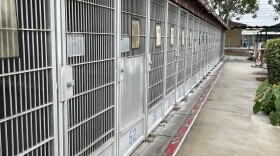Millions of Californians have little or no choice when it comes to choosing a state legislator.
In 24 of the 100 districts on the ballot, only candidates from one party are running. And in 15 of those districts, the incumbent lawmaker is unopposed and all but assured of re-election.
In most of these districts the only party on the ballot is Democratic as the struggling Republican Party failed to even field a candidate. That leaves nearly 14½ million of California’s roughly 40 million people with no choice between major political parties in picking their state representative.
That’s good for the dominant political party and entrenched politicians, but bad for voters, said Mindy Romero, founder and director of the University of Southern California’s California Civic Engagement Project.
“Lack of choice is never a good thing,” she said.
RELATED: Do You Have Questions About Voting In The March 2020 Primary Election?
Just one candidate is running in the March 3 primary election for 15 of the 100 seats on the ballot.
“It’s like you’ve won. There is no other candidate on the ballot,” said Alex Vassar, the California State Library's legislative historian.
Early voting started Monday, but the window is open until Feb. 18 for write-in candidates to file with state elections officials. Several incumbents are likely to pick up long-shot challengers who could qualify for the November ballot just by writing in their own names.
The last time a write-in candidate won was in 1952.
Two Republicans and 13 Democrats are unopposed including Senate leader Toni Atkins of San Diego and the head of the powerful Appropriations Committee, Sen. Anthony Portantino of La Cañada Flintridge.
“Incumbency is incredibly powerful,” Romero said, making it difficult for would-be opponents who lack the name recognition, financial backing, staff or campaign experience to realistically compete.
Although legislative district lines were drawn by a bipartisan citizens’ commission, many districts are inevitably dominated by voters favoring one of the two major parties. The Republican Party has been in decline for years and now is so marginalized in California that Democrats hold every statewide office and super-majorities in both legislative chambers.
RELATED: Are You — Or Do You Know — A Young Latino Voter Who Plans On Voting For The First Time?
Two years ago was even worse for Republicans. They failed to field candidates in 28 districts, six more than this year, said Rob Pyers, research director at the nonpartisan California Target Book that tracks legislative races and compiled comparison numbers for The Associated Press. Democrats had candidates in every 2018 race, but missed two Assembly seats this year.
“The reality of the situation is these are tough, tough districts to begin with," said Bryan Watkins, the California Republican Party’s field and political director.
They are so overwhelmingly Democratic that they would be difficult for Republicans to win even if they fielded candidates and devoted substantial resources there, he said. Voters in the districts lacking Republican challengers favored Democratic presidential nominee Hillary Clinton over Republican Donald Trump by an average of roughly 70% to 30% four years ago, he said.
Republican political consultant Mike Madrid said he would have lost his job if he didn’t have candidates in every district back when he was the party’s California political director in 1998. The party’s failure to field candidates in nearly two-dozen legislative races now likely reflects the GOP’s dwindling finances and grassroots support, he said.
One consequence is that unopposed Democrats can freely devote their resources to other races where Republicans might have a chance, Madrid said. Another is that voters are much less likely to vote in races where they don’t see a candidate from their party.
Kim Alexander, founder and president of the California Voter Foundation, said there are fewer open seats this election cycle than 10 years ago, before voters extended term limits. But more than four times as many incumbents now face challenges from within their own party after California switched to sending the top two primary election vote-getters to the general election regardless of party affiliation, she found after compiling comparison numbers for the AP.
“From the voters’ perspective, competition is a good thing,” Alexander said. “We are seeing more incumbents going uncontested, but we’re also seeing more incumbents being contested by people from their own party than we did 10 years ago.”
The progressive organization Courage California named three of the 15 unopposed lawmakers to its “hall of shame” this year, complaining that the Democrats aren’t liberal enough. Yet the group now has no realistic chance of unseating them.
“Elections are the ultimate accountability tool, and if you don’t have challenges of folks that are doing a terrible job, then you can’t have accountability,” said Eddie Kurtz, the group’s executive director.






